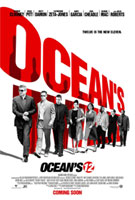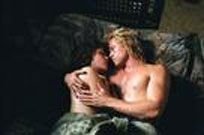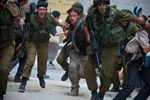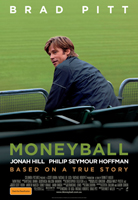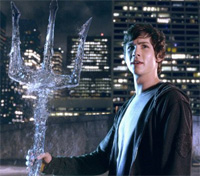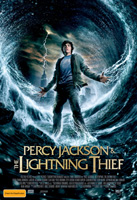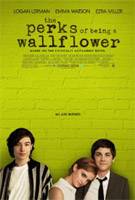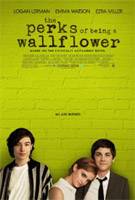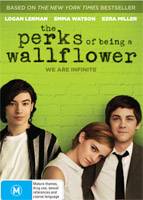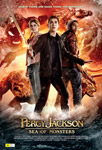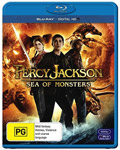Brad Pitt Fury
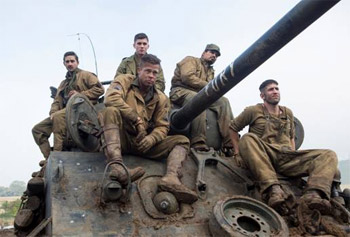
Brad Pitt Fury
Cast: Brad Pitt, Shia LeBeouf, Scott Eastwood, Logan Lerman, Xavier Samuel, Michael Peña
Director: David Ayer
Genre: Action
Synopsis: April, 1945. As the Allies make their final push in the European Theatre, a battle-hardened army sergeant named Wardaddy (Brad Pitt) commands a Sherman tank and her five-man crew on a deadly mission behind enemy lines. Outnumbered and outgunned, Wardaddy and his men face overwhelming odds in their heroic attempts to strike at the heart of Nazi Germany.
Fury
Release Date: October 23rd, 2014
About The Film
'I was a David Ayer fan from his previous work, especially End of Watch," says Brad Pitt, who takes the lead role of Don 'Wardaddy" Collier in Ayer's new film, Fury. 'Knowing the depths he goes to for realism and authenticity, and his unique structure, I find him to be one of the standouts. He's also a vet, and from that firsthand experience, he has a wealth of knowledge on the subject that drew us all in."
'Fury is not your grandfather's war movie," says producer Bill Block, who packaged the film for QED before Columbia Pictures picked up the distribution rights. 'I don't think we've seen the physical horror that the armored division went through. Outmanned and outgunned, they only won through true, raw fighting."
'No one writes about men at their most vulnerable the way David Ayer does," says producer John Lesher, who previously teamed with David Ayer on his acclaimed film End of Watch. 'In all of his films, I see some common themes: they are about brotherly love, friendship, fathers and sons, and some of these themes resonated quite heavily in this script."
Fury takes place in late-war Germany, 1945. 'The war's almost over and this dying elephant – the Nazi empire – is on its last legs," David Ayer explains. 'It's a different world from your usual war movie, where we celebrate victorious campaigns like the invasion of the European continent, or D-Day, or the Battle of the Bulge, these famous battles that American troops have taken part in. One of the forgotten time periods is this last gasp of the Nazi empire, with an American army that has been fighting for years and is on its last reserves of manpower. The men are exhausted. In World War II, you fought until you either won or died, or were grievously injured and got sent home. The fanatical regime is collapsing, it's a confusing environment where anyone can be the enemy – it's incredibly taxing on the fighting man's soul."
It is into this environment that David Ayer created the character of Don 'Wardaddy" Collier, played by Brad Pitt. 'Wardaddy is the tank commander – his responsibility is keeping his men alive," Brad Pitt says. 'He's responsible for their operations, their morale, and especially making sure that they are operating as a machine. His calls are going to determine who walks away and who doesn't. But at the start of the film, they've lost one of their five members, and a new kid is thrown into our family. It's not just that he's new, it's not just that he has no tank experience – he's actually a threat to our survival; if he can't perform the whole crew is in danger and people will die. He comes in with great innocence, and the question is, how do you raise a child in a day? Wardaddy has to get him calloused and get him performing, to ensure the safety of others."
Into Wardaddy's platoon comes Norman Ellison, a young man woefully unprepared for war. 'He's been trained to be a typist, but sent to the front lines in the 2nd Armored Division, to serve as an assistant driver. He's stunned and bewildered – he's sure that there has got to be some mistake," Logan Lerman explains. 'Norman is there to fill the seat of a dead man, Red, who had served with the other four members of the crew, essentially since the beginning of the war. He's this young, innocent kid – the kind of kid that anybody would like to have as a son or little brother – but war is no place for a kid like that. He's going to have to change if he's going to survive, and Wardaddy is going to show him how."
Over the course of these 24 fateful hours, that training will be tested as the five men of the Fury – Wardaddy, the commander; Boyd Swan, the gunner; Grady Travis, the loader; Trini Garcia, the driver; and Norman, the assistant driver – take on 300 enemy German troops in a desperate battle for survival.
The intensity of the screenplay that David Ayer wrote for Fury has become his hallmark, but the movie, like his screenplays for Training Day, The Fast and the Furious, and other films, also demonstrates a deep connection between the characters. 'David Ayer's movies are visceral and real, but they're also deeply about brotherly love and friendship in the most extreme circumstances," says Bill Block.
In this film, David Ayer has drawn a similarly complex relationship, as the bond that forms between the young Norman and the veteran Wardaddy forms the heart of the film. 'Norman is young and fresh and innocent, and that makes him endearing, but it's also the problem he must overcome," says David Ayer. 'Wardaddy must break him of his innocence."
'In a lot of ways, Norman is the son that Wardaddy never had," David Ayer continues. 'He mentors Norman, parents him, guides him to become an effective soldier." Ayer tells that complex story through a deceptively simple structure. 'The whole movie takes place in 24 hours, from dawn one morning to dawn the next day," notes producer Ethan Smith. 'It's very straightforward in its construction, but very eloquent and complicated in its storytelling."
With his 2012 film End of Watch, Ayer garnered acclaim for a unique and provocative directorial style. With Fury, he takes a new step in his career, says producer Bill Block. 'This is an evolution of David Ayer's style, a more formal and beautifully filmed picture," he says. 'Where in End of Watch, he created a docu-video style, this film is a period piece that maintains his signature – intense reality."
'This is a distinctly David Ayer movie in the sense that it is a very authentic-looking war movie in its look and feel," says producer Ethan Smith. 'David Ayer steeps himself in research and works closely with tactical and military advisors to get all the details right. His directing process includes surrounding himself with the best people from various disciplines to ensure accuracy."
Producer John Lesher says that the research pays off with characters and experiences that come to life on screen because they seem true to life. 'I was so fascinated," says John Lesher. 'And he said, -You should come to my office.' I saw the extensive number of books and research and thought that he had put into this story. I was duly impressed."
At the same time, John Lesher says, David Ayer wrote a screenplay that was relatable and true to any generation. 'What I thought was so interesting and so compelling about this is that it felt very modern," John Lesher says. 'Yes, it's about World War II, and all the specificity and all the authenticity and all the research that David did really comes to life in the script. But it's really about men at war."
Kevin Vance, one of the military technical advisors on the film, says that the commitment to realism meant a commitment to a furious, visceral film unlike any WWII film that has come before. 'In most World War II movies, we have this association with -the good war' – and it is," he says. 'But over 60 million people died in World War II. That's a dichotomy that hasn't been fully explored, and that's what David Ayer demanded of this film."
One way that the filmmakers were able to 'get it right" was to enlist the aid of a number of veterans of the 2nd Armored Division who served during World War II. 'David Ayer is ferocious about authenticity," says Brad Pitt. In order to make that authenticity happen for the crew, he relates, 'he set us up with some beautiful experiences. We got to meet several vets who were all in their 90s; they had survived D-Day landings, and the Battle of the Bulge… it was a very humbling experience to sit in their presence and listen to their stories. They had very visceral descriptions of what it was like to be in the tank: the heat, the exhaust, it was oily, the smell of death was always in the air. Most of them were undertrained, they were underequipped, they were dealing with incredible hardships and weather, lack of food, lack of sleep. And they had to push on under the most harrowing of conditions."
Bill Block, QED, and Brad Pitt hosted a meeting for the main cast with WWII veterans, including those who could provide first-hand accounts of what it was like to operate a tank in some of the bloodiest battles of the war. Four men in particular spoke to the actors, sharing their memories and experiences.
Donald Evans, who served in a reconnaissance company of the 66th Armor Regiment in the 2nd Armored Division, says he 'didn't know too much about the 2nd Armor" when he was assigned there. 'I don't even know if I knew they were in Africa."
Paul Andert lied about his age in 1940 to get into the army at age 17, and was a staff sergeant with the 41st Infantry in the 2nd Armored Division during the war. 'Patton became our division commander – he was strong in educating us," he says. He recalls Patton's memorable words on the importance of each of us doing what we can to show leadership: 'Patton says, -You don't push spaghetti; you pull it'" – that is, as a leader, if you make a move, your men will follow. Andert would remember these words again and again, in battle after battle. 'He put the fight in us – he put in the idea to get out there and move. Don't stay still."
George Smilanich was a driver during the war, and he says that though each man had his assignment, 'everyone on the crew could do anything the other guys could do. We could rotate if we had to – if we lost somebody during a battle, one of the other crew members could step in and take over, whatever job it was. We could drive a jeep, we could drive a halftrack, we could drive a tank. It was like a big, happy family – if I wanted the assistant driver to take over, I'd trade places with him; if the gunner wanted to step out, the assistant driver would step behind the gun. The commander gave the orders and told us what we should and shouldn't do, but that's how it was. And when we lost somebody and somebody else came in, he joined right in."
Ray Stewart was just 21 years old in the spring of 1945 – not unlike the character of young Norman Ellison in the film. Assigned to a tank as a bow gunner, he says, 'I had four guys in there who were trained by Patton, and I was the new guy. I was going to try to do the best I could. My tank commander at the time was trying me out. The gunner eventually moved into his place; he became the platoon leader. Of course, we had other guys that moved into his place."
What's it like being in a tank when the enemy is firing at you? Despite inches of steel protecting you, it's still just as harrowing as one would imagine. 'When they're shooting those machine guns and it's bouncing all around you, you're feeling it in your armored car or your tank – just hearing it shakes you up," says Evans. 'There's nowhere to hide." After a tank gets knocked out, the crew is assigned a new vehicle. What kind of guts does it take to get into the next tank? Ray Stewart shrugs. 'You just go and get in it," he says.
Details of the tankers' memories come alive in Fury – for example, that every fifth bullet from the machine gun is a tracer; that there are so many tracers that the heat can melt the barrel; that the difference between outgoing and incoming artillery is the incoming's telltale whistle; that the outgunned Sherman tanks could find ways to use their exceptional mobility against the Germans' mighty Tiger tanks. It's these details that make the film feel true-to-life.
'Veteran accounts are hugely important, because they bring it to life," says David Rae, one of the military technical advisors on the film. 'They give you the actual ground truth of how a crew fought through different theaters – through Normandy, North Africa, through the low countries, and finally to Germany, that final push. They give you interesting stories that you can grab hold of and emotionally attach yourself to."
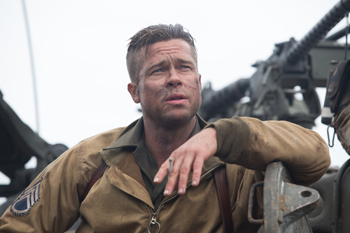 About The Characters
About The Characters
Leading the men of the Fury is Don Collier – better known by his war name, Wardaddy. The role is played by Brad Pitt. 'Wardaddy is representative of the backbone of the army – sergeants and NCOs really hold the army together," Ayer says. 'He's very no-nonsense, very practical and pragmatic – all he cares about is getting the mission done." But David Ayer says that Wardaddy is also a man with a hidden past. 'He's atoning for his history, through this incredible act of penance of fighting in this war and liberating Europe. He has his own moral code, but it's not your civilian moral code; it's very reflective of the time. He's very stoic, but with life and humor and love for his men and a true hatred for the enemy."
'When we first read the script, I was drawn to the unusual character arc of Wardaddy," says producer Bill Block. 'When we meet him, three years into the war, he's a committed and accomplished killer – and what happens to him, happens in a way we've never seen. He becomes a compassioned hero, a leader to his other men, to complete his mission."
'Wardaddy is an incredibly interesting character," says producer John Lesher. 'These guys have been together, under his command, since the beginning of the war. He's a complicated, damaged soul and he's intent on giving whatever wisdom he has to Norman. It's an original character that David Ayer has created, and I think a really compelling one – the likes of which we haven't seen before."
Shia LaBeouf takes on the role of Boyd Swan. 'He's the gunner and basically the second-in-command of the Fury," says the actor. 'He operates the main gun system, the seventy-six millimeter high-velocity cannon. He's a stone cold killer, but he's also a man of faith – it's interesting for me to explore how a man who reads scripture and has faith – a Christian – reconciles that with being in combat."
To explore that dichotomy, Shia LaBeouf drew on his experiences meeting military personnel who showed similar character traits. For example, Shia LaBeouf spent time with Don Evans, a veteran of the 2nd Armored Division during World War II. 'He's a Christian man, a righteous man, who will tell you the difference between killing and murder – and there is a big difference. Don drove that home," says the actor. 'He lives his life by the book, but still will kill you if you are on the other side – and he'll have no problems sleeping at night. I guess God put certain people here to collect souls – the Grim Reaper for God." Shia LaBeouf also drew on conversations with younger veterans. 'I met a captain named Shane Yates – he's a captain, but he's also a minister and a preacher and a chaplain in the army, for the Forty-Second," says Shia LaBeouf. 'I got permission from them and from David to go live with them on a forward operating base and in the middle of their deployment. I spent about a month and a half with the National Guard, then linked up with the rest of the boys and we went to another little boot camp at Fort Irwin." LaBeouf was also inspired by working with David Ayer. 'David Ayer has a wild history of his own, and he shares it with you and he listens. He's our Patton – he's kind of crazy, which is perfect," he says.
'Often in World War II movies, you'll see these archetypal characters – but David Ayer takes those archetypes and uses them as inspiration for real, authentic characters," notes John Lesher. 'Shia's character, archetypically, is a guy who went to preacher school – we've seen that guy – but in David Ayer's hands, he's a man who believes in God, but loves killing, too. Shia gives such a soulful and deep and penetrating performance; his commitment was unparalleled and impressive."
The linchpin to the film, according to John Lesher, is the character of Norman Ellison, played by Logan Lerman. 'Norman represents the audience in the film," he says. 'He's the new kid with almost no military training, and it's through his eyes that we learn about the tank, the grammar and the story of the movie. It's his story of acceptance; his journey is the core of the film."
David Ayer says that in the closing days of World War II, it was not unusual for very young and very unprepared men to be thrust suddenly into battle on the front lines. 'After the Battle of the Bulge, the U.S. was short on manpower, so they'd give these guys sometimes as little as three or four weeks of combat training, and pack -em up and send -em into war," he notes. 'Norman is very unprepared for what's happening, and he becomes their hostage, in a way, as he's thrown into this steel cage and dragged across the fields of Germany into combat. Norman ends up in situations that he's absolutely not equipped for, and it's Wardaddy's job to train him, to get him to overcome the civilian's sense of right and wrong."
Logan Lerman plays the young soldier. He says he was attracted to the role for its complexity. 'For actors of my age, there are a lot of simple characters out there," he notes. 'Norman, on the other hand, was very complicated and stressful to think about. It seemed like a challenge – it's a great role, a great story, and I'd have the chance to work with a lot of people that I admire."
One of those people is David Ayer. Logan Lerman was well-prepared for David Ayer's intense style of directing and followed the director – like a private following a general. 'David Ayer takes you on this insane, amazing journey," he says. 'He scheduled a huge amount of prep time for us, the actors. He introduced us to the world we'd be living in – it wasn't an easy ride, but I was down for it, excited for it. I like the challenge. I gave myself over to it, and it was some of the most creatively satisfying work I've ever been fortunate enough to be a part of."
As a result of all of that prep, Logan Lerman says, David Ayer was comfortable giving his actors the freedom to interpret the characters as they saw fit. 'We spent at least a month and a half, meeting every day – but really longer than that, meeting all the time – going over the script every time we would meet," says Logan Lerman. 'We got to the point that we knew \ the material so well – every little section, every piece – that we became comfortable. We could play around, go in different directions – go -off book' a little bit."
After collaborating with actor Michael Peña on the film End of Watch, David Ayer created the role of the tank's driver, Trini Garcia, especially for Michael Peña. 'I believe around 350,000 Mexican-Americans served in World War II, many of them as drivers in the Armored Corps," David Ayer notes. 'He's a sophisticated guy, and back on the block, he'd be very much in charge – but in this situation, the exhaustion and the nerves and the stress, he's turned to alcohol to try to solve it. There was a lot of alcohol use in the army at that time, and he wouldn't be the first tank driver to be drunk driving."
'It's cool, despite his idiosyncrasies, he's paying homage to all of the Latinos that fought in World War II that were unacknowledged," says Michael Peña. 'My hat goes off to David Ayer – there were Latin guys who went to war and fought for their country, and it touched them, psychologically and physically."
Jon Bernthal rounds out the crew of the Fury as Grady Travis. 'He crawled out of a swamp," says Ayer. 'He's the kind of guy who was a Depression-era child, grew up without shoes on his feet, working since the age of eight on farms – he's just not equipped for the adventure he's been forced into by circumstances."
'If Wardaddy is the brains, Grady is the guts," David Ayer continues. David Ayer says that as the Loader, he has a 'special relationship" with the gunner. 'He's the guy shoveling coal into the furnace, the ammunition into this weapons system, and because of that they have a very close working relationship."
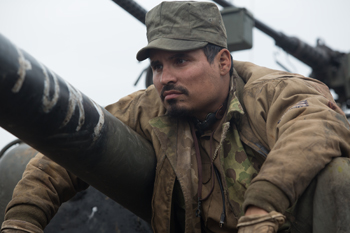 It's a relationship that goes beyond work, though. 'Grady thinks of Boyd as the -mother' of the group," says Jon Bernthal. 'Grady has unbelievable respect for Boyd as the spiritual and ethical center of the group. With Boyd, he keeps his connection to something higher and to God. The loader/gunner relationship is incredibly interesting as they absolutely depend on each other. You'd think there would be a split between them – one guy who's very much about Christ and preaching and the Bible, and then the other who is all about killing and women. But the two characters absolutely melded as one. We're just two sides of almost the same person."
It's a relationship that goes beyond work, though. 'Grady thinks of Boyd as the -mother' of the group," says Jon Bernthal. 'Grady has unbelievable respect for Boyd as the spiritual and ethical center of the group. With Boyd, he keeps his connection to something higher and to God. The loader/gunner relationship is incredibly interesting as they absolutely depend on each other. You'd think there would be a split between them – one guy who's very much about Christ and preaching and the Bible, and then the other who is all about killing and women. But the two characters absolutely melded as one. We're just two sides of almost the same person."
About The Tanks
There were five main tanks used for filming, all various models of the M4 Sherman tank: in the film, the tanks are nicknamed Fury, Matador, Lucy Sue, Old Phyllis, and Murder Inc.
For Ian Clarke, the Picture Vehicle Coordinator, and Jim Dowdall, the Tank Crew Supervisor, the process of finding five original WWII-era tanks began as any other job might: by calling their colleagues. 'The military vehicle fraternity in the UK is quite small and we all tend to know each other," says Jim Dowdall. 'Eventually, we found the people who could supply the tanks and who were prepared to devote three months of their lives to this film."
To populate the tank crews, Jim Dowdall says, 'We thought that the best thing would be to use trained tank crews – not collectors, but guys who'd been to Afghanistan and other combat situations recently. They could not only command the tanks properly, but think on their feet if something went wrong with one of these seventy-year-old vehicles." For the Fury herself, there were three main vehicles used by the production. First, naturally, was a real tank, supplied by the Tank Museum in Bovington, a late-war Sherman with a 76mm gun.
In addition, the crew created a set for specialized shots and filmmaking necessity: the process vehicle was built on a tank base with a platform mounted on top, so that the crew and cameras could film on the tank.
For shots of the Fury's interior, production designer Andrew Menzies created an interior set. 'That was the biggest technical challenge," he says. 'It's a very small set, and every wall had to fly away, allowing David Ayer to shoot from any angle. At the same time, it would be on a gimbal, moving around, so that it would feel like a moving vehicle – and of course, as we were shaking it around, it couldn't have any wobbling or loose parts."
Gary Jopling, the film's Assistant Art Director, created the tank interior set through drawings and models, then built the structure. 'It does everything that a real tank would do," he says. 'The gimbal gives it a rocking motion, and the turret turns 360 degrees. The gun elevates and can be fired."
To create the interior, the art department scanned the interior of the real tank, then enlarged it by 10 percent. From the scan, they built a set from a box metal frame with a resin fiberglass coat. To create those flyaway walls that would allow for camera placement, 42 pieces float in and out.
Jopling and the props department then dressed the interior with equipment from real tanks. 'We gathered pieces from various tank enthusiasts around the country to ensure the interior looked authentic," he says. 'Everything functions as it would in a real tank. Bible's area in particular is quite complicated. For example, he has a telescope that he wants to be able to look through and that has a fine adjustment to it."
The filmmakers also found a creative solution to the way that the Fury could load a shell, fire, and eject the empty shell. 'Special Effects created a ram system that pushes the block across like a real gun, and then retract. A ram pushes the head into the shell and ejects it with a puff of smoke, so that it creates the illusion of firing and ejecting an empty shell."
The tank – which was a rolling set that had to be dressed and maintained as a picture vehicle every day – also became a second home of sorts for the actors who portray its crew. 'When they had boot camp, they were taught to live outside; later, when Fury became available to them, we couldn't really get them out of it," says Tank Crew Supervisor Jim Dowdall. 'They put their own stamp on it. They began to live and to eat inside it. Between rehearsals, instead of getting off the tank, they just hunkered down inside and talked and lived like a tank crew would. I think that shows in the movie – there's a familiarity."
Jon Bernthal – like all of the actors – became very attached to the Fury. 'They say it ain't the size of the dog in a fight, it's the size of the fight in the dog. She's a badass tank," he says, describing the tank. 'She's not the biggest, not the strongest – you should see the Tiger! – but she's all heart."
Adds Logan Lerman: 'Seeing the tanks up and running, these seventy-year-old vehicles – it was a beautiful sight."
For Michael Peña, the reality of learning his way around the tank helped him get into character: 'We had to train a lot outside of the tank to make sure we could get in and out like real soldiers. At first, even getting through the hatch, which is just a little bit wider than your body, would be kind of challenging," says Michael Peña. 'Then, when you've done it hundreds of times, you get your own little technique to get in and out. It's muscle memory."
With so much action in and around the tank, recording the dialogue required tenacity and problem-solving. As he did with each of the department heads, Ayer stressed to sound mixer Lisa Piñero that realism was key – so they sought to capture the sound as realistically as possible, and with the correct look and sound of the original equipment. However, two obstacles stood in the way. First, for the internal tank scenes, the original communications equipment is not only 70 years old, but was never meant to survive the test of time and did not capture high-fidelity sound even when new. Second, for the external tank scenes, the real tanks and even the process vehicle were so loud that they overwhelmed all other sound.
Lisa Piñero and her team solved the problems in two creative ways. First, to get the true-to-life look, they modified vintage T-30 throat microphones and T-17 handheld mics – originals from the war – with new connector material, and adapted the interior tank plug-in communications boxes to accept a return signal from Lisa Piñero's sound cart. The practical props could now be used as true recording devices.
For the shots on the exterior of the tank, the sound wizards first experimented with mic placement to find which mics and placements got the best pickup. Once filming began, many scenes involved a moving tank that then stopped for a dialogue or battle scene; for these, the sound team would lay hundreds of feet of microphone cable through deep, flinty, clay mud. Finally, to get any dialogue lost to the incredibly loud moving tanks, the sound team and the actors used a dedicated truck that they specially soundproofed for ADR sessions.
In the film, the American tank column faces their most deadly threat: a German Tiger tank. 'It's the ultimate tank of war," says Andrew Menzies. 'A Sherman really stood very little chance against a Tiger – it's set up as a formidable weapon."
There are only six remaining Tigers from the period, and the Tank Museum has the only one that is in running order. 'The Tiger 131 is a very important tank," says David Willey, the curator of the museum. 'The tank we're using sat on a hillside in Tunisia, being attacked by British tanks of the 48th Royal Tank Regiment. It knocked out at least two of those Churchill tanks, but was hit by others – you can see the damage on it. The German crew abandoned the tank, and after the war, it was handed over to the Tank Museum."
'Since the vehicle was captured in 1943, it's been used a few times, but never the way we've used it," says Jim Dowdall, the Tanks Crew Supervisor. 'You've got to look out for it, because the metal is old – you've got to make the conditions perfect to make it as kind as possible to the vehicle."
Of course, the filmmakers took no risk of damaging the real Tiger – so, for the shots in which the tank is damaged, they created a copy. The original was measured and the museum had all of the original drawings. 'We cut the tank out of quarter-inch steel – it's a self-supporting structure," says the production designer, Andrew Menzies. 'We then put it on a smaller tank base, and we added the wheels with visual effects in post-18 production. It was really important to everyone that our copy looked absolutely correct, right down to the nuts and bolts that hold it together."
About The Production
Fury was shot over twelve weeks in the fields of Oxfordshire and at Bovingdon Airfield in Hertfordshire. According to producer John Lesher, a number of practical conveniences brought the production to England. 'First, there's an amazing crew base, so that was a good place to start," he says. 'But there's also an amazing amount of assets in England – tanks, armored vehicles, both German and American. Finally, the light in England – that beautiful northern light – and the weather was a good match for Germany. For all of these reasons, England became the ideal place."
But before production began, David Ayer and his team began an extensive research process, researching every aspect of the story – from the kind of tanks that the Fury would encounter to the type of artillery and other weapons involved to the campaigns that her crew would have seen, right down to uniforms and hair.
'It's in the little things," says David Ayer. 'Even when somebody in the audience doesn't understand what they're seeing, when it's right it all snaps together and matches the pictures that we've all seen in newsreels and on TV. That's what I'm after."
Ethan Smith says that all too often, cinematic history has shaded our view of what World War II was like. David Ayer went back to the source. 'David Ayer would talk about how in the late 1940s, when Hollywood started making World War II movies, the die was cast for a clean look," says Ethan Smith. 'What David Ayer wanted to do was not reference cinematic history, but actual history. So we would watch hours and hours of Signal Corps footage and closely studied how the men would walk, carry their weapons, approach a mission or relax on the side of a road, and that became the template for our movie."
In addition, David Ayer and his team were advised by three military advisors and four Armored Division veterans of World War II, who lent their knowledge and experience to the production.
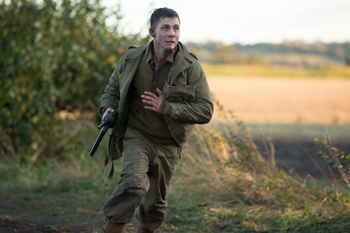 Kevin Vance and David Rae were the military advisors primarily responsible for working with the actors to make them into credible tankers. Among their other duties, Kevin Vance and David Rae created a bootcamp for the five lead actors.
Kevin Vance and David Rae were the military advisors primarily responsible for working with the actors to make them into credible tankers. Among their other duties, Kevin Vance and David Rae created a bootcamp for the five lead actors.
Kevin Vance had previously collaborated with David Ayer on End of Watch, talking the cast through the approach to different aspects of community policing. On the set of Fury, he helped the actors to delve into the warrior mindset. Kevin Vance had previously worked in the United States Special Operations community for fourteen years and spent many years in high threat areas around the world; David Rae spent 23 years in the British military, many of those in that country's armored division.
As part of their duties, Kevin Vance and David Rae organised a boot camp for the actors. 'We wanted the cast to operate and think and as a team. Function as one unit. Some elements were individually tasked for competition and stress, but ultimately by the end of the camp they were to be interdependent. Not just to act, but be a crew," Kevin Vance says. 'Every element had intent. Even in their clothing, the weaponry, and their rations – everything was very basic, to mimic the era. They were also exposed to the elements throughout the week, so they got a very small taste of what the World War II generation went through. Rain, mud, wind - and sleep deprivation. Six days of pre-production were allocated for the boot camp, and of the six days, the first couple of days were designed to break them down mentally and physically – keeping them fatigued, sore and uncomfortable. From there, we built them up together. That metamorphosis was crucial." The bootcamp wasn't hazing – it was necessary, according to David Rae. 'They needed to have that bond," he says. 'It needs to be portrayed on screen – you'd pick up on it if it wasn't there, because you're quite intimate as a crew. The cliché is -no rank in a tank' – we all know who the boss is, and we know where the line is and wouldn't cross it, but we're very, very close to each other. You know everything about each other. You look after each other. It's a brotherhood, within a tank."
But it wasn't only about emotional connection – it was about the actors' knowing their roles in the tank like they know their own names. 'You have to know your drills. When a battle starts, muscle memory kicks in," says David Rae. 'Whether it's 1945 or 2014, you're working as a machine. My personal goal for the bootcamp was to insure they looked like five people moving in the same direction."
'Our bootcamp was mandatory," Brad Pitt says. He's careful to note the differences between their bootcamp as actors and the hardships that soldiers experience in wartime – 'we were tourists," he says – but even though it was a simulation, the experience as close to the real thing as possible. 'We were full on, up at five in the morning, two hours of PTs, schooling, grunt work, obstacles until late evening, cold rations, sleeping in the rain – and somebody's gotta do point guard, changing on the hour. It was designed to break us down, to get a taste of the little hardships, but then also to build us up when we were at our lowest, morale-wise."
That boot camp was invaluable, says Shia LaBeouf. 'We got to know each other," he says. 'Six days in the woods, you get to know a little bit more about each other and become more of a unit. We're all part of something we know bigger than us and we're doing this for a lot of men. I think camp really made us look at the flag differently; it's a talisman, it's very religious. It's spiritual. It's transcendent. My dad's a veteran, so I've always had a respect for it, but sitting with Kevin Vance and the boys out there in the woods, it got very emotional."
'The boot camp was absolutely vital to the process," adds Jon Bernthal. 'We built a real trust with each other… that doesn't happen from just being on a film set." Kevin Vance and David Rae's counterpart on the German side was Ian Sandford, a former paratrooper in the British Army, who served as a German Military Advisers. With an avid interest in Germany during World War II, he taught himself German so he could read original training manuals; he would later run the supporting actors playing German troops through machine gun drills.
About The Photography
Director of Photography Roman Vasyanov, who previously collaborated with writer-director David Ayer on End of Watch, notes that this film took a very different approach to the photography. Where End of Watch was inspired by documentary-style filmmaking, Fury would be much more classical in its methods. 'After I read it for the first time, I knew that it couldn't be handheld," he says. 'It had to be a choreographed dolly and a moody photography, with the camera just following them and not bringing any extra energy."
Adds producer John Lesher: 'The visual grammar of the film is very beautiful, old-fashioned moviemaking. We wanted to take a more David Lean approach, a simple, beautiful, classic film approach."
In terms of the look, Roman Vasyanov explains, 'I wanted to make a very naturalistic, minimalist movie. For me, this film is, first of all, a drama and the other things are secondary. I didn't want to light it too much or do anything fancy with the camera – it's not like an action movie. This is probably the most minimalist movie I've ever shot, and the minimalism brings the performances to the foreground."
Roman Vasyanov explains that many recent World War II films have been influenced by the famous war photographer Robert Capa, but Fury would take another tack. 'For me, I chose a completely different language – it's a sort of road movie," he says. 'When you see real footage of World War II, you never see a cameraman running with the camera. Usually, it's shot on a very long lens. Sometimes the wide shot tells the story better than millions of close-ups, just because you can feel a different aspect to this madness of war. You can feel silence."
The entire movie was shot on film and not digitally. 'I knew that our palette of colors would be very restricted, and film has a better color," he says. 'Also, this would be an anamorphic, widescreen movie. We did some tests and there was great resolution, great highlights and a beautiful shallow depth of focus on film. It was the best way to capture this beautiful landscape and the tanks travelling."
One of Roman Vasyanov's greatest challenges was to authentically light the dim interior of the Fury. 'I sat for a couple of hours in a real tank, and I looked at the hatch to see how the light behaves," he says. 'Most of the time, it's overcast and cloudy, so the sun is not going through the hatch to the inside of the tank. So, we created a system of LEDs, which we put on the floor and taped on the walls. We worked in very low light levels, just enough to get focus and exposure."
About The Production Design
Production Designer Andrew Menzies was charged with realising David Ayer's vision for the authentic look of the film. 'I didn't feel this movie was about design; It was about reproducing history," says Andrew Menzies. 'To that end, pretty much every vignette in the film is derived from images that we derived from research. Several images that really triggered with me when I was doing research were the battalion area – I came across these pictures of men in deep mud up to their knees and struggling and pulling things through it and heavy equipment in the mud. I realized that really was the essence at that time in the war…a lot of the day to day was through mud and drudge and cold."
'Like any movie, it's about mood," he continues. And on Fury, that mood can be summed up with one word: the mood is mud. 'We wanted as much mud and grime and dirt as much as possible," he says. 'We added mud and brought in tons and tons of mud dirt to build that texture of the movie. The mud was the connecting glue in the film."
The only location which had limited mud was the German town set that Andrew Menzies built on a runway at Bovingdon Airfield in Hertfordshire. Andrew Menzies studied of German towns to incorporate appropriate architectural details – shutters, wood and plasterwork – into his build.
The German town scenes form the middle act of the film and create a break in the mood of the movie. It's a village that has been relatively untouched by war. 'It's the first time they can let their hair down and relax and the men would find alcohol, food and women – they really relaxed," Andrew Menzies says. 'So I used slightly more cheerful colors in the town – for this beat in the movie, you feel a respite from the drudge of war."
The German town set was built in twelve weeks. 'David Ayer wanted to shoot the tanks coming in, so we designed it around the action, the tanks and snipers in windows. We ended up in a square where the majority of the scene is held. The size of the town was driven by the size of the tanks; if we had made too small a square, then the tanks would look silly in there."
One of Andrew Menzies' more unusual builds was the sawmill that continuously burns during the Crossroads Battle at the climax of the film. 'It's quite an unusual construction because it had to look like a wood building, but it had to burn continually as we shot the battle scene over the course of a week. And, of course, the burn had to be controlled – we had to be able to turn the flame on and off on command. So we built it out of steel and concrete. It looks like a wood building, but we burned it over the duration of the shoot."
About The Costumes
To keep the production as real as possible, David Ayer and his team also engaged in extensive research into the military uniforms of the time that would become the film's costume wardrobe. 'We studied a lot of photographs and we were fortunate to have some good people to advise us on what should be correct," says David Ayer. 'There's an amazing amount of detail in these uniforms, because whereas the U.S. military basically wore work wear to fight in, the German military wore men's tailored uniforms that were built on traditional European tailoring techniques; a lot of them were handmade. Interestingly enough, the Germans – especially the officers – typically fought in what we would call dress uniforms, with full medals."
Costume Designer Owen Thornton worked very closely with Ayer to study exactly what was required. 'We did two years of research to try and get things right with the costuming and uniforms for this period," he says. 'We went through the inventory of what the American soldier would be wearing in 1945. Europe had just been through one of the longest winters in fifty years, so the look of the solider had dramatically changed; he'd be wearing an overcoat on top of a field jacket, on top of sweaters, on top of shirts, on top of thermals. We tried to re-create the look of a homeless soldier who lives in foxholes, eats his rations cold, and who hasn't washed or shaved in a couple of months."
For research, Owen Thornton says that the filmmakers eschewed Hollywood history in favor of the original sources. 'We looked at thousands of Signal Corps photographs – original photographs from World War II which were very specific," says Thornton. 'We started from January 1945, going up to the end of the war. We meticulously went through archives of the Second Armored Division and looked for individuals who stuck out to us in photographs."
Despite giving each soldier his own personality in his uniform, Thornton says that there are broad consistencies that they drew, based on the research. 'By the end of the war, the American army looked like a ragtag mob," he says. 'Their clothing resembled civilian work wear. They used a lot of herringbone, loose-fitting fabric uniforms; their field jackets were made of wool, so their look had a brown color palette. Conversely, if you look at the German army for the same time period, their uniforms were completely different; they were sculpted and form-fitting. The German army employed artists whose full time job was to draw new camouflage patterns, so by the end of World War II they had at least 35 different patterns. We incorporated as many of those as we could."
An important part of costuming is making the clothes appear lived-in, broken-in, and worn. For a costumer, this is called 'breakdown." 'Part of the wardrobe department includes a breakdown crew – fabric artists who'll make a brand new garment seem like it's had a year's worth of use," Thornton explains. 'They'll wear the color down and make pockets look like they're about to blow out. They'll put rips in and then do repairs on top of those rips. We did this to 350 American uniforms and 350 German uniforms –each one of these outfits is unique, and each soldier has his own story."
Of course, Norman Ellison's breakdown is far different from that of the other men of the Fury. While the other four men of the Fury have been together for many years, Norman Ellison is just joining the crew. 'We weren't subtle about who the new guy was," says Thornton. 'The other guys are covered in dirt, grease, holes, stains and damage. They're grubby and tired men. We created their look with dirt and damage, whereas Norman is brand new and fresh faced. He's clean shaven, has a beautiful haircut and no dirt in his fingernails."
In addition to the military costumes, David Ayer's screenplay also required civilian costumes to be conceived with the same diligence and attention to detail. To that end, Maja Meschede, the Civilian Costume Designer, travelled to Berlin and rented clothes made in the 1930s and 1940s. 'Every little item – buttons, hooks and bars, shoe lacing – had to be of that time," she explains. 'The fabric from those times has much more texture and a three-dimensional quality than any fabric that you can get nowadays." Any costumes that had to be made, such as Irma and Emma's dresses, were created using original fabrics from the time.
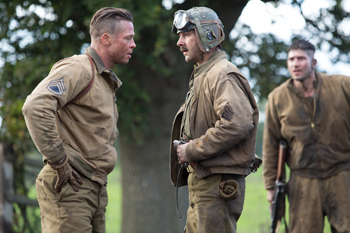 About The Make-Up And Hair
About The Make-Up And Hair
For Make-Up and Hair Designer Alessandro Bertolazzi, the first step was to put away the makeup and to play with dirt. 'We had tons of reference, but had no idea how to make it work," he says. 'So, we started by putting fingers in the dirt make-up and then smearing it on their faces. It wasn't perfect, but it was the first step to forgetting the idea about classical make-up."
In creating the look, Alessandro Bertolazzi referenced such artists as Oskar Kokoschka, Francis Bacon, and Egon Shiele. 'The drama, the pain and the suffering is really perfect in these paintings."
Alessandro Bertolazzi spent a day training his team of make-up artists how to forget Hollywood and classical training. 'I would add some brown to the face with a brush, and then start smudging it and spritzing it and adding some blood, and everybody had fun with it," he explains. 'There were different levels of dirt, so level zero was a light patina and level four was for people who stayed in the field camp in the mud and smoke for weeks on end."
About The Music
For Fury's score, David Ayer turned to Steven Price, who earlier this year won the Oscar® for his score to Gravity. After reading the script, Steven Price knew he had a terrific opportunity. 'The script was gripping," he says. 'David Ayer has a way with writing characters: you feel that you know them, and want to know more about them, very early in the film, which is sort of a great trick to pull off."
Wanting to be involved early in the production, Steven Price first met David Ayer on the set of the film, which was shooting not far from Steven Price's home in England. 'It was remarkable – we approached, and I could see a lot of smoke in the distance. When we got there, they were shooting long shots of one of the big tank battles in the film. There were no cameras to be seen – it felt like you were really just watching an intense battle," he recalls. 'I met with David Ayer, and from our conversation I could see what he was aiming to do and I wanted to be a part of it."
'This movie is about the bit of the war that hasn't really been dealt with in films – the last few weeks of WWII. There's an easy assumption that a soldier's experience at that point wouldn't have been as intense so close to the Allies victory, but the reality is the opposite," Steven Price continues. 'Noone was surrendering without a fight. It's a story that hasn't been told, and the way David Ayer has told it is authentic, and really emotional and beautiful."
Steven Price says that David Ayer was one of those filmmakers who have an innate understanding of what film music can accomplish. 'The main note I got from David Ayer was that he wanted the audience to feel," he explains. 'He pointed to his heart and stomach. He wanted a real guttural experience for the audience and to feel like you're going through this hell along with the characters, but within that, you're also feeling this brotherhood, these beautiful relationships that are conjured up."
In that way, Steven Price notes, though the film has heavy war action, it also takes the audience on an emotional journey as the men in the tank form a family of sorts. 'The film is about that family – they had gone through three or four years of the most horrific experiences, and it was about how they were dealing with that. David Ayer and I talked about the psychology of the characters, and we drew a framework of where they were in their lives."
Just as he did on Gravity, where Steven Price frequently incorporated the sounds of radio waves into the score, Steven Price was able to find a distinctive voice for the music of Fury by using unusual and unconventional instruments in a fusion with the orchestral, choral and solo writing featured throughout. On this film, he had access to recordings made on the set, and later, weapons, dogtags, and parts of the tank itself were called back into duty as percussion equipment in the studio.
'I used some of the sounds they recorded at the time of shooting – like shells dropping on the floor of the tank – which I'd take away and manipulate to become ambiences inherent within the music," he explains. 'When we got to the final sessions, we also had a selection of the original props they used in the film. They were brought along to the studio, to Abbey Road, and I used those to create some of the percussion elements in the score. It felt like elements of the score grew out of the visuals and grew out of the story. That's what I was looking to do – to extract something of the quality of the visuals and David Ayer's vision into the music. When I start on a film, I like to think about how I can make the music as distinctive as possible and make it feel like it couldn't belong to any other story."
It's not that audiences are meant to recognize these sounds, Steven Price says. 'Oftentimes, you'll never hear them as what they are, but the very first sound in the film is, for example, the sound of soldiers identification dog tags, slowed down a vast amount. It's essentially unrecognisable, but it somehow gives a very haunting and fitting quality to the opening of the film."
Steven Price also made heavy use of a choir, often chanting and singing in German. 'The idea was that while the characters are supposed to be winning the war, in fact, they're in the middle of Nazi Germany and surrounded. We wanted to give a very unsettled feeling – the whole score gives you a sense of being in danger. So I used the choir in different ways - sometimes as a group, sometimes solo, very closely miked. It's this constant presence, this undercurrent of unsettling darkness."
The two major themes in the film, of course, are the themes attached to Wardaddy and Norman, as so much of the film is about their relationship. 'This is a very thematic score. The way that David writes his scripts, it's very much about the relationships between the characters, so that allowed me to see how the themes combined with each other as we learn more about them," Price explains. 'The first themes you hear in the film are the motifs attached to Wardaddy – his theme is initially quite blunt musically, but it develops throughout the film as we learn more about him. Norman on the other hand, starts off as such an overwhelmed and frightened character, with a theme that continually shifts around, and doesn't settle at all. As the film goes on, he develops a strength, and so does his theme. In fact, the themes gradually evolve throughout the film. A lot of the work in this film was reducing the themes down to their bare elements, finding the combinations that really meant something emotionally."
In the end, Steven Price, says of his work, 'The idea of the mass mechanization of war was the key to all of it, for me – the score proceeds in this weighty, machine-like manner. I was very careful to give it a heavy tread and purposeful sense of moving forward." But, Steven Price notes, it's also a score that captures the beauty of the relationships between the characters. 'While there is a big orchestral element, there are also a lot of very intimate cues," he explains. 'I recorded a lot with solo cellos and solo violas and also solo voices. And often the score goes from these very, very tiny and pure moments to these primal, orchestral sounds. We were constantly contrasting the human beings with this mechanized world that they were existing in."
Fury
Release Date: October 23rd, 2014
Have You Seen This?
MORE
- Mission: Impossible Fallout
- Glenn Close The Wife
- Allison Chhorn Stanley's Mouth Interview
- Benicio Del Toro Sicario: Day of the Soldado
- Dame Judi Dench Tea With The Dames
- Sandra Bullock Ocean's 8
- Chris Pratt Jurassic World: Fallen Kingdom
- Claudia Sangiorgi Dalimore and Michelle Grace...
- Rachel McAdams Disobedience Interview
- Sebastián Lelio and Alessandro Nivola...
- Perri Cummings Trench Interview


